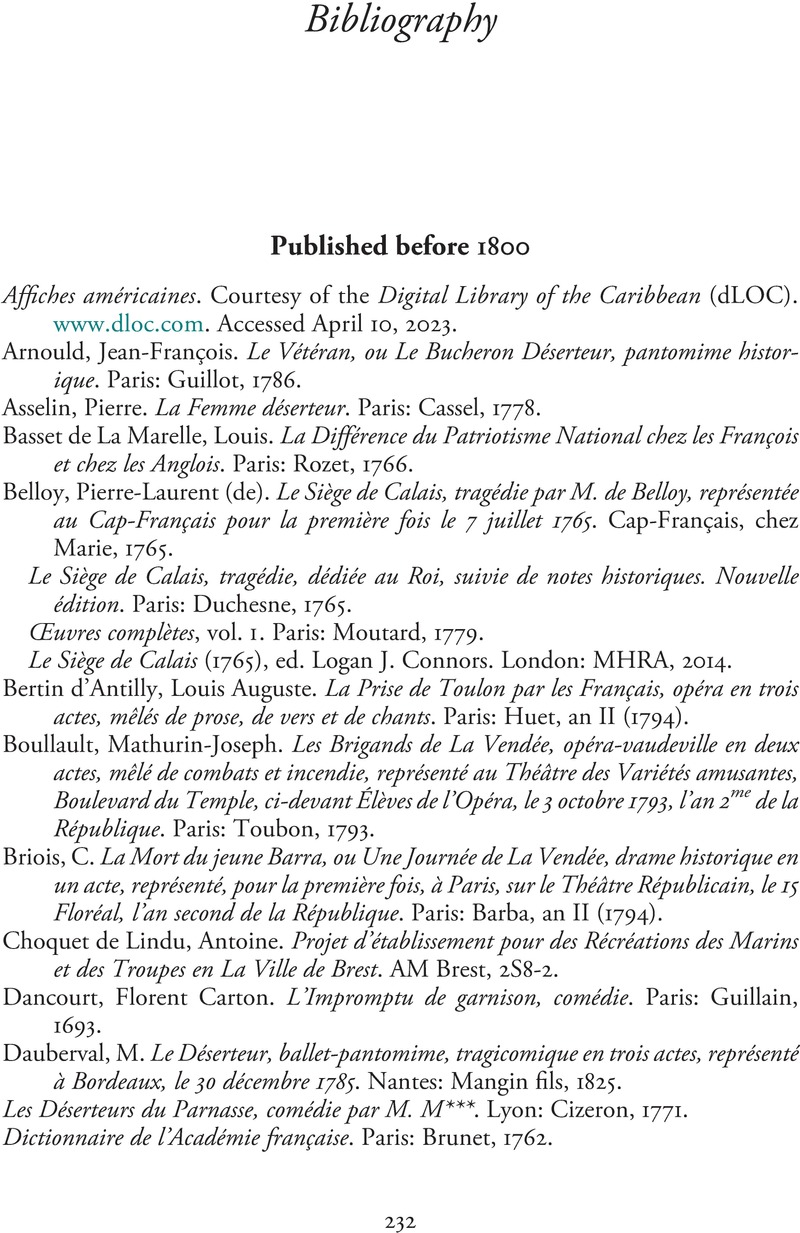Book contents
- Theater, War, and Revolution in Eighteenth-Century France and Its Empire
- Reviews
- Theater, War, and Revolution in Eighteenth-Century France and Its Empire
- Copyright page
- Contents
- Illustrations
- Acknowledgments
- Abbreviations
- Introduction Performance, Revolution, and the Military–Theatrical Complex
- Chapter 1 From tragédie nationale to pièce militaire: Pierre-Laurent de Belloy’s Le Siège de Calais
- Chapter 2 Military Masculinities, Dramaturgical Manipulation, and the Desertion Play
- Chapter 3 Performing on the Periphery: Military–Theatrical Experiences at the Théâtre de la Marine (Brest) and the Comédie du Cap (Cap-Français)
- Chapter 4 Total Theater for Total War: Military Dramas and Performances of the French Revolution
- Chapter 5 Femmes soldats and Militarized Domesticity: Women at War in French Revolutionary Theater
- Conclusion The Military–Theatrical Complex of Revolutionary Saint-Domingue
- Bibliography
- Index
- References
Bibliography
Published online by Cambridge University Press: 09 November 2023
- Theater, War, and Revolution in Eighteenth-Century France and Its Empire
- Reviews
- Theater, War, and Revolution in Eighteenth-Century France and Its Empire
- Copyright page
- Contents
- Illustrations
- Acknowledgments
- Abbreviations
- Introduction Performance, Revolution, and the Military–Theatrical Complex
- Chapter 1 From tragédie nationale to pièce militaire: Pierre-Laurent de Belloy’s Le Siège de Calais
- Chapter 2 Military Masculinities, Dramaturgical Manipulation, and the Desertion Play
- Chapter 3 Performing on the Periphery: Military–Theatrical Experiences at the Théâtre de la Marine (Brest) and the Comédie du Cap (Cap-Français)
- Chapter 4 Total Theater for Total War: Military Dramas and Performances of the French Revolution
- Chapter 5 Femmes soldats and Militarized Domesticity: Women at War in French Revolutionary Theater
- Conclusion The Military–Theatrical Complex of Revolutionary Saint-Domingue
- Bibliography
- Index
- References
Summary

- Type
- Chapter
- Information
- Publisher: Cambridge University PressPrint publication year: 2023



